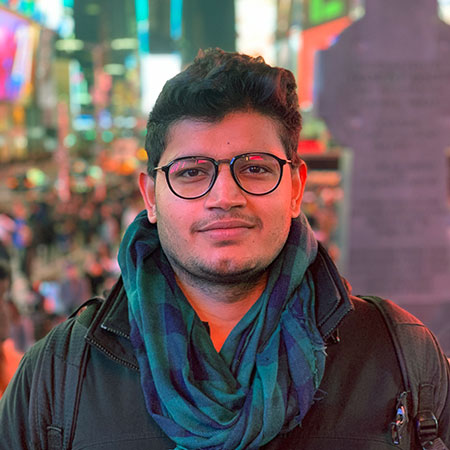
The lighting designer for Bliss Fasman Inc. in New York City reflects on the value of the local Section and the key to overcoming obstacles
Why lighting?
I went to Milwaukee School of Engineering (MSOE) and started getting interested while exploring the three specialty fields within architectural engineering: electrical/lighting, structure and mechanical. Lighting grabbed my attention and I wanted to learn more about a career in lighting, so in my sophomore year I started going to local IES Milwaukee Section meetings and took the ED-100 Fundamentals of Lighting class.
Then I started to notice and appreciate and criticize light more. I also started asking professionals at IES meetings questions and joined MSOE’s IES/NECA professional society. Since I wasn’t interested in the power-side electrical specialty and wanted to learn the poetics of design intent, I transferred to South Dakota State University and there I was able to get into higher level studio classes and learn the creative side of design. I give big credit to local IES Sections, which have been a great influence for me to be in lighting.
Favorite project?
So far, pilot-based warehouse lighting research on acute and subjective effects—such as focus or calm and alerting or energizing effects—in such a dynamic environment. While working on such a big project I learned a lot from my advisor, Meg Smith [Signify Research]. We were using top-notch research about visual and nonvisual effects of lighting and its metrics in the design and tried to evaluate Kit Cuttle’s proposed metrics in our project’s perceived brightness of illumination. The whole process was challenging and a great learning experience.
Best part of your job?
The process of designing and interchanging ideas without hesitation. While working at Signify, I studied new and ongoing research in lighting and tried to implement those into real world scenarios.
Biggest obstacle you’ve encountered?
Well, I have learned by making mistakes, but I always stay motivated. My biggest obstacle was transitioning from engineering classes, which are very technical, to core architecture design courses and studios. All the hard work and late nights were worth it, and I enjoyed the process, but I stayed motivated and that’s the key to overcoming the biggest obstacles.
Most important thing for the future of the lighting industry?
Promote lighting education to non-lighting professionals. It can be in the form of training, brochures, videos, posters, or other
written or online education for the general public, and it should be culturally and literacy-level appropriate.
Lighting is getting more and more complex day by day and with innovations in technologies, the shift toward the IoT platform is also important. These two things will have a future in the lighting industry, and if the customer knows more about lighting, they will ask more about it as a part of a service.
What’s next?
I am looking for new challenges as a lighting designer at Bliss Fasman Inc. in New York. I also plan to become a certified lighting designer and continue to explore the field of lighting.
